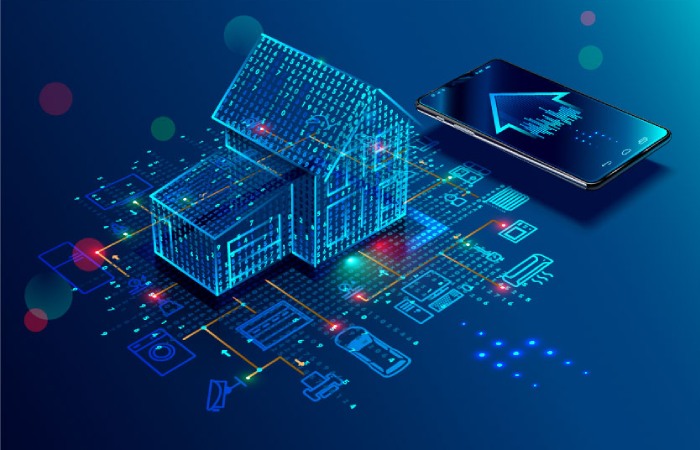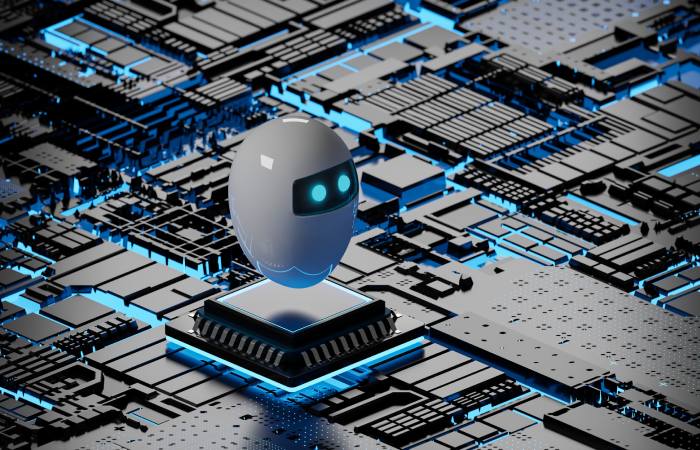At Embedded World last week, Qualcomm made a major IoT announcement about a new AI-ready platform for home and industrial use. There was also an additional briefing on Qualcomm Connect regarding service-defined Wi-Fi.
These announcements demonstrate a significant effort to address the disasters facing smart homes and buildings.
Let’s look at that this week and finish with my product of the week: a new AI-ready desktop from Lenovo based on the latest AMD Ryzen 8000 platform. There are a lot of AI-ready things on the way.
Challenges With Smart Home Technology

I’ve been following smart home technology since the 1970s when I got excited about the X10 and started removing all the switches in my tiny apartment and replacing them with X10 alternatives.
I also had an X10 robotic turntable at the time, which was great when it worked. You can select individual tracks and play a stack of discs. However, its performance was much lower than expected, and the X10 technology was iffy on a good day.
Over the years, I’ve tried several platforms from different vendors that didn’t interoperate, often resulting in more problems and costs than benefits. Recently, a company submitted a bid to replace my Insteon system with something newer.
This offer was for $45,000, which would blow my modest budget. I decided not to purchase this expensive solution because it would probably be obsolete in a few years.
Now, we are moving towards AI, and the standards have progressed. There is a lot of interest in the Google Matter standard. The Amazon Alexa platform has also proven surprisingly effective at adopting third-party platforms and enabling voice control of the products it will connect to. However, patches or updates to any of the connected systems often cause them to stop working for a while or even not work at all.
What is needed is a greater degree of standard hardware to reduce the complexity that makes what should be easy-to-use hardware complex enough that most have not adopted the technology.
Qualcomm Connect: Service Defined Wi-Fi
Working with British Telecom, Comcast, and a few other major companies and cable operators, Qualcomm has created a solution called Service.
They defined Wi-Fi as a service that allows these Internet service providers to offer a service that will cover their compatible smart home devices and integrate them into a standard central control that users can access at home or on the go.
You’ll connect to a user portal to view and control your smart home’s switches, outlets, appliances, security cameras, TVs, lighting, HVAC, and other connected devices, like your electric car, for example. . from any connected PC or smartphone when you are at home or when you are remote.
The advantage of a service provider approach is that not only can you request help, but these providers periodically provide technicians who, for a fee, can resolve your issues remotely or on-site and allow you to ‘be operational, thus providing users with a better solution. Experience. Solution. Solution. Experience more than the DIY approach that most solutions require today.
But that only solves part of the problem.
Qualcomm’s AI-Ready IoT Platform Qualcomm
Last week, Qualcomm announced new integrated AI platforms and micro-powerful Wi-Fi SoCs, which could create a level of standardization in these cutting-edge devices that should offer a much more consistent experience when combined with a defined Wi-Fi offering. . . . for the Service.
Together with 35 Embedded World companies, Qualcomm is bringing to market a multi-vendor solution with standardized hardware that is expected to make the cost of building and maintaining next-generation IoT intelligent building solutions for homes or businesses significantly higher. Easier than before.
The announced hardware consumes up to 88% less power than previous generations and uses the most advanced wireless technologies currently available, such as the Qualcomm QCC730 platform for Wi-Fi IoT connectivity.
These features enable more battery-powered IoT devices and fewer devices requiring AC power, resulting in a significant reduction in installation and service costs.
These modules could enable better security camera solutions and reduce your worries about porch pirates, pet pirates, and this new wave of thieves coming from other countries to steal your home. The result should be a more comprehensive system for managing your home both when you’re there and especially when you’re not.
AI for Smarter Home Management Qualcomm

Ideally, when we have service-defined Wi-Fi, Google Matter, and Qualcomm’s AI-ready platform, we can layer an on-premises or cloud-based AI solution to manage automatically your home or business.
The components will operate automatically, activating the camera and lights if someone enters your property, home, or business. They will also activate your lights and provide automated voice guidance during a natural disaster, theft, or fire, helping you and your family get out of harm’s way as quickly as possible.
The system has a single interface for the entire site, offering a comprehensive AI-based solution that proactively manages security. Automatically protect the electric shutters from the elements and alert you if an animal is outside the garden point, thus avoiding nuisance and long searches (when it comes to once and a headache for several months).
The core of House is the ability to better protect against package theft, foolish children, pet theft or escape, and wild animal intrusions that could endanger your home or pets. Intelligent.
AI is the icing on the IoT cake, and these Qualcomm services and products are on the critical path to finally making it all work.
Wrapping Up
Smart homes and buildings have been a big disappointment because they promised a lot but delivered little in terms of an integrated, easy-to-use offering.
It works with a cable or phone service provider that embraces Qualcomm’s service-defined Wi-Fi concept and pushes IoT devices to be used daily.
Qualcomm hardware solutions should improve the potential of smart homes. The advances and success of Google Matter further amplify this potential.
Integrating a new class of increasingly capable AI solutions can provide autonomous control and better guarantee the results originally promised by smart homes in the 1970s. I guess it took a while to understand what was needed to keep that promise.
FAQ
How is Qualcomm contributing to the smart home?
Qualcomm is revolutionizing the smart home by integrating artificial intelligence, edge computing, and 5G connectivity into its platforms. The company’s innovations focus on seamless device compatibility, faster Wi-Fi 7 and 5G connectivity, and AI-powered automation to improve user experience and efficiency.
What is Qualcomm’s vision for AI-first smart homes?
Qualcomm is committed to creating an AI-first smart home ecosystem where devices use AI for predictive automation, greater security, and personalized user experiences. This strategy ensures that smart homes can learn from user behaviour and adapt to optimize power consumption, safety, and comfort.
How is Qualcomm improving smart home connectivity?
Qualcomm Snapdragon platforms feature Wi-Fi 7 and 5G to deliver high-speed, stable connectivity for smart home devices. This reduces latency for connected devices and ensures seamless home automation, video conferencing, and streaming services.
What role does Qualcomm play in smart home security?
Qualcomm integrates AI-powered security solutions into its smart home platforms, offering real-time threat detection, secure data transfer, and device authentication. This ensures that connected home devices remain protected from cyber threats.
How is Qualcomm improving device compatibility in smart homes?
Qualcomm is working to create a more unified smart home experience, focusing on interoperability so that devices of different brands and types can work together seamlessly. Consumers can mix and match smart home devices without worrying about compatibility issues.


